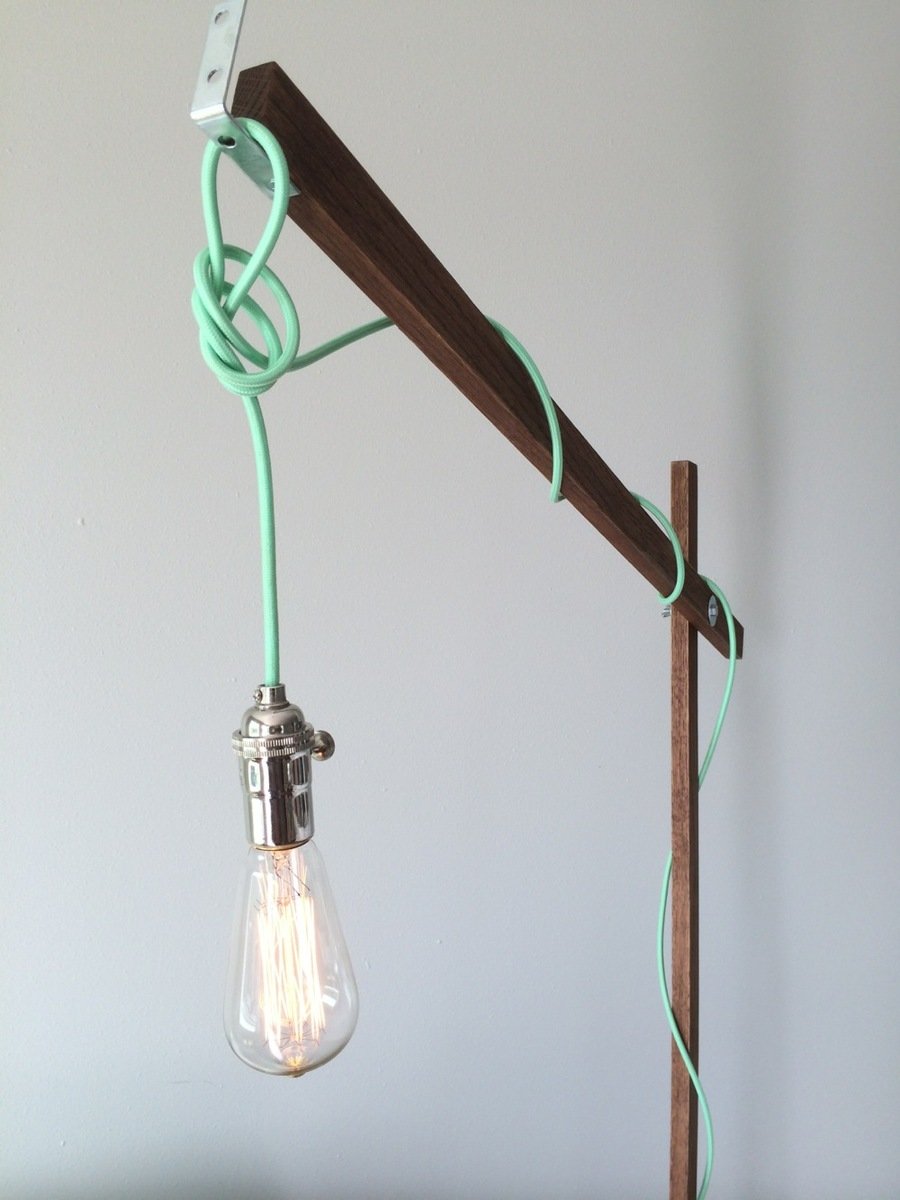
DIY Modern Wood Floor Lamp from a 1x2 - super easy DIY Project! From ana-white.com
General Instructions
Please read through the entire plan and all comments before beginning this project. It is also advisable to review the Getting Started Section. Take all necessary precautions to build safely and smartly. Work on a clean level surface, free of imperfections or debris. Always use straight boards. Check for square after each step. Always predrill holes before attaching with screws. Use glue with finish nails for a stronger hold. Wipe excess glue off bare wood for stained projects, as dried glue will not take stain. Be safe, have fun, and ask for help if you need it. Good luck!
Finishing Instructions
Preparation Instructions
Fill all holes with wood filler and let dry. Apply additional coats of wood filler as needed. When wood filler is completely dry, sand the project in the direction of the wood grain with 120 grit sandpaper. Vacuum sanded project to remove sanding residue. Remove all sanding residue on work surfaces as well. Wipe project clean with damp cloth.
It is always recommended to apply a test coat on a hidden area or scrap piece to ensure color evenness and adhesion. Use primer or wood conditioner as needed.
It is always recommended to apply a test coat on a hidden area or scrap piece to ensure color evenness and adhesion. Use primer or wood conditioner as needed.



Comments
backpacker2004
Sun, 08/31/2014 - 08:44
Great Design! - possible LED/CFL variant, hidden fasteners.
I few years back I built a 2x2 lamp and I love it. As I didn't know about beautiful cords/lightbulbs available on Etsy I went for an ugly, yet energy efficient LED bulb, then hid it with a shade. The exposed bulb sure has beauty but if you want to direct light and hide an ugly bulb, the shade is helpful. I went for one of the cords at Ikea that has the shade mount built into the bulb fixture. I hid the ugly cord by routing a slot along both 2x2s. I may add washers to mine, or a lock washer to the movable joint as mine tends to slip down every few weeks under its own weight. One can also send a bolt through the bottom of the of the base into the end of the 2x2 for a hidden fastener look, but it takes patience/luck.
tracysmith
Wed, 09/03/2014 - 15:31
Ikea also has cord kits for
Ikea also has cord kits for much less, although, you don't get those fun colors - black or white. Can't beat the price though - $5. Plug in style, no switch on the cord or the socket.
MrCoffee
Thu, 09/04/2014 - 13:39
http://www.colorcord.com/
http://www.colorcord.com/ also has a huge selection of options for bulbs/cords.